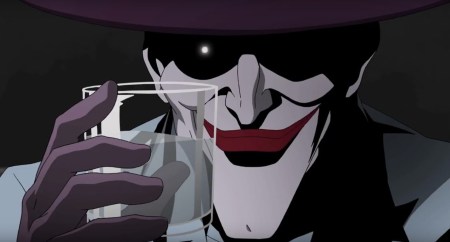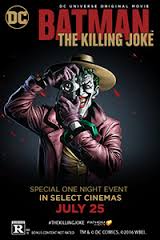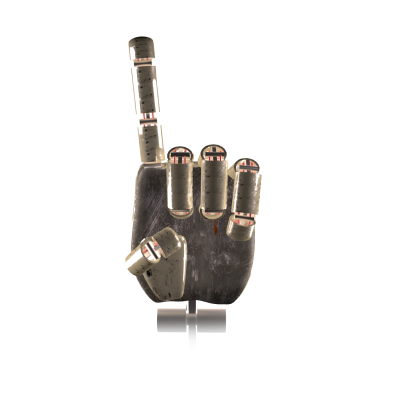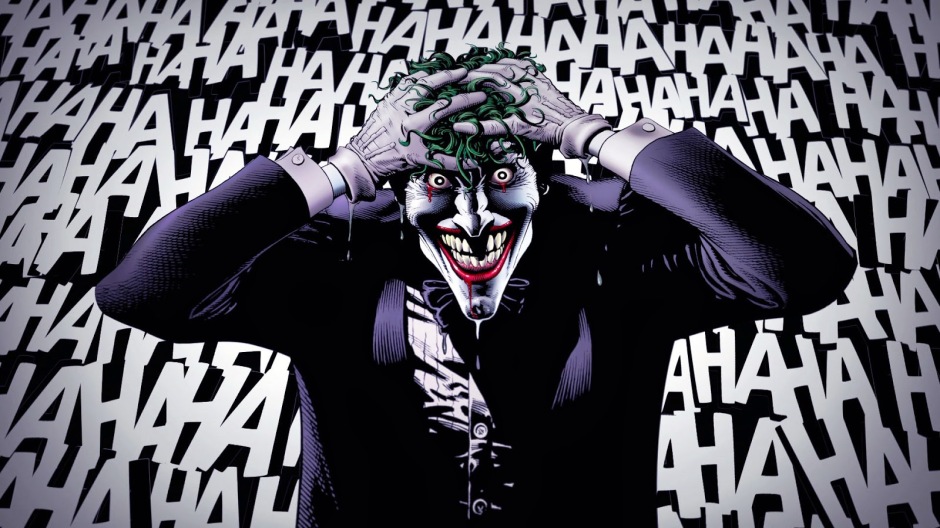DC’s newest animated feature, The Killing Joke, is a strange combination of bad artistic choices that are fuelled by dichotomous agendas, those being: bending over backwards to please those who criticise the original comic for it’s treatment of Barbara Gordon aka Batgirl, whilst simultaneously gratuitously pushing for an R rating due to the success of Marvel’s Deadpool earlier this year. In other words, The Killing Joke is a jarring attempt to offend without offending anybody.
First things first, I am not a massive fan of Alan Moore’s 1988 story nor do I have a problem with adaptations deviating from the original source. For example, Watchmen, also by Moore, is a better film for replacing the original alien vagina monster with Dr. Manhattan as the linchpin of Adrian Veidt’s plan. The quality of Moore’s work goes without saying, although I do not think The Killing Joke is representative of this. Compared to dense and literary books such as Watchmen, Swamp Thing and From Hell, The Killing Joke is sparse and doesn’t say a lot that hadn’t already been said about Batman and The Joker’s relationship. It is basically a summary. What it does bring to the table is The Joker’s previously unknown origin story, a tragic tale of a desperate comedian who turns to crime in order to support his family, although, as with other characters such as Wolverine, when the mist of mystery disperses what remains is often far less interesting than not knowing was. The Killing Joke isn’t a bad book, Alan Moore’s meticulous detail is present in the panelling and the small details, it just isn’t as great as its sales numbers would imply.
The Killing Joke is only forty-six pages long, so the story was expected to be padded out on the screen. It wasn’t. Instead, the first thirty minutes of the film involve Batgirl and Batman taking down a mobster. It feels like two films sewn disjointedly sewn together. The aim of the Batgirl centred prologue seems to be to humanise the character, her only function in the book is to take a bullet from The Joker in order for Batman and Commissioner Gordon, her father, to feel the effects (see ‘women-in-refrigerators theory’). The Joker also undresses her, photographs her and possibly rapes her. So it makes sense to flesh out the character in the 2016 adaptation. Unfortunately in order to do this writers, Bruce Timm, Brian Azzarello and Alan Burnett have her do little more than fight bad guys and fuck Batman.

So, in order to desexualise Barbara and humanise the character, she is given a sex scene. This makes no sense. One possible explanation could be that for the first time, instead of a superhero movie cutting something out in order to achieve a lower age rating, a sex scene has been shoehorned into a superhero movie in order to shoot for a higher rating, due to Deadpool. Again, a DC film has failed by being overly reactionary and by feeling a day late and a dollar short. Bruce Timm’s explanation in an interview with Vulture, if anything, makes things stranger by associating the act with Batman’s role as a father figure.
“We were aware that it’s a little risky. There’s definitely some stuff in that first part of the movie that’s going to be controversial. Here’s where we came down on that specific issue: It was really important to us to show that both of the characters make some pretty big mistakes. I mean, his ‘parental skills’ aren’t that great. Maybe never having had any kids of his own, he doesn’t realize that if you tell a kid to not do something, they’re going to want to do it even more. And then she makes some mistakes and then he kind of overreacts to her mistakes and then she overreacts to his overreaction. So it’s very human; it’s a very understandable story. It’s tricky because it’s messy, because relationships are sometimes messy. But to me and to Alan [Burnett] and Brian [Azzarello], it was all very fascinating to us to explore that angle.” – Timm.
Personally I don’t think this film should have been made at all. The Vulture interview is baffling and at the end of the day if the story is too outdated, offensive, misogynistic or even too short then don’t adapt it. A square shaped block has been forced through a circular hole, resulting in a mutilated version of the source that has been ramped up in its adult nature for solely profit driven reasons whilst claiming to be a more sensitive and contemporary version of the story. If the content is too offensive don’t adapt it, adapt something else. The very fans this film is aimed at recently campaigned for the removal of Rafael Albuquerque’s variant cover for Batgirl #41 due to the very fact that it referenced The Killing Joke. The cover was indeed pulled and the #changethecover campaign embarrassingly won.

In the words of Alan Moore himself,
“Why should sexual violence be ring-fenced when forms of violence every bit as devastating are treated as entertainment? If I may venture an answer to my own question, might it be because the term ‘sexual violence’ contains the word ‘sexual’, a word relating to matters traditionally not discussed in polite society?”
The Joker is a criminal, a psychopath who embodies chaos and disorder in the world. Why wouldn’t he do these things? We do, on the other hand, need to talk about Batman. Who is banging his sidekicks in The Killing Joke and murdering everybody in Batman v Superman, but that’s a different conversation.
Ultimately, The Killing Joke is worth watching to hear Kevin Conroy and Mark Hamill read Moore’s original dialogue. Absolutely everything else is sadly disappointing. Emphasis on the ‘hear’ as well. In the comic Moore’s wordy style is poignant and gripping. On the screen however, no matter how good the words are, what we see is two characters monologuing for most of the film. Unlike Miller’s to-the-point and actiony The Dark Knight Returns, Moore’s The Killing Joke sadly doesn’t translate well to screen.



Great post, btw I have nominated you for the Sunshine Blogger Award – details here: https://dbmoviesblog.wordpress.com/2016/08/22/sunshine-blogger-award-2016/
LikeLike